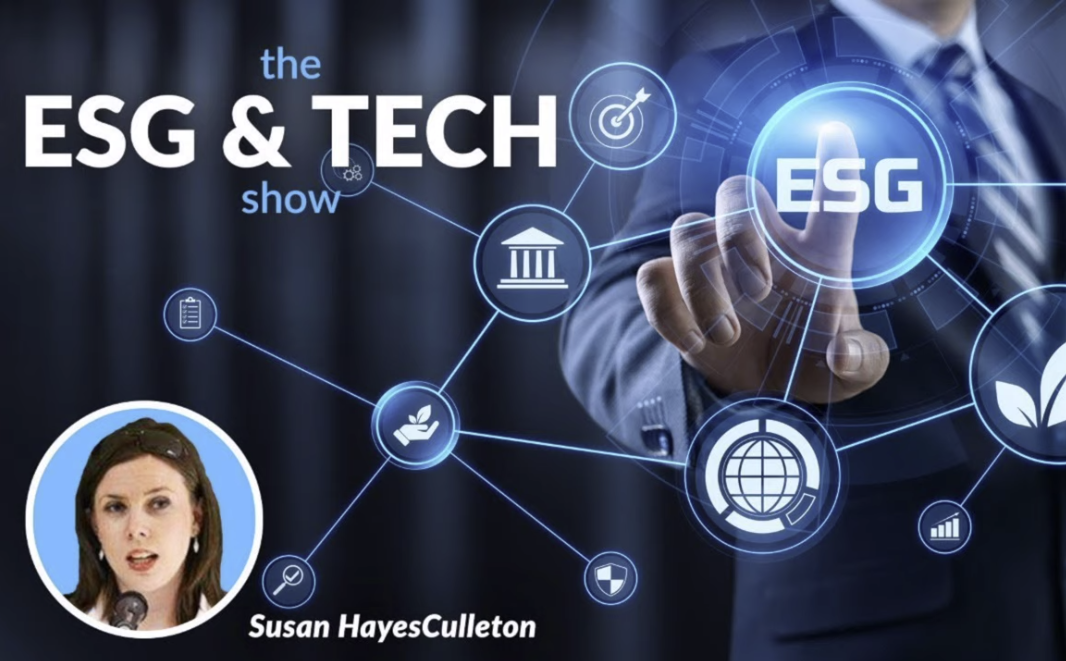During this week’s episode of the ESG & Tech Show, we discussed:
— what’s driving their growth?
— what is different about their structure?
— how to analyse them using VectorVest?
In my preparation for this show, I noted a distinct sense of cynicism that came from two places. The “blank-check” companies in the 90’s is often connotated with penny stocks, lack of regulation and plain, old losses. Secondly, there is meteoric growth of today’s SPACs and could this be a bubble that’s blown up with hot air?
In the episode, I simply brought the facts to our audience about how they work and how VectorVest applies an objective lens to this area (that’s often full of drama in the headlines).
For a start, CB Insights offers a great infographic that describes exactly how the process works. A sponsor of a SPAC (Special Purpose Acquisition Company) raises money through an IPO before identifying a target company. After negotiating with them, the (IPO) shareholders vote on whether they’re happy to go along or whether they want to withdraw. The sponsor raises more money (often through a PIPE – Private Investment through Public Equity) and then the target merges with the SPAC to officially trade.
It’s true, there is dramatic growth in the area. If you look at a video that Glenn produced in only March of this year (at exactly this moment), you will see how many SPACS were noted on SpacAnalytics.com at various phases. Here are a couple of things that stood out to me:
| October 2021 | March 2021 (Glenn’s Video) | |
| SPACs Seeking Acquisition | 497 | 392 |
| SPACs Announced Acquisition | 116 | 108 |
| SPACs Completed Acquisition | 427 | 285 |
| SPAC IPO Pipeline | 270 | 185 |
Therefore, there is a lot going on in this area. Two other points to note are:
- In the year to date 2021, 51% of IPO proceeds came through a SPAC
- In 2020, SPACs accounted for over 50% of newly listed companies in the US.
In a very well written piece in the Harvard Business Review, the source of this growth is due to a confluence of “an excess of available cash, a proliferation of start-ups seeking liquidity or growth capital, and regulatory changes that had standardized SPAC products.” The article goes on to point out what has changed over the years and how some argue that this can sustainably continue and others challenge the assumptions.
Let’s move from the general to the specific. If you want to examine some SPACS, how do you do it? VectorVest has a super useful way to arrive at a list of them within a couple of clicks. Log into the US version of the programme and then:
- Select the Viewers tab
- Choose “Industry Viewer”
- Rank the list in alphabetical order.
- Scroll to “Finance (SPACs)
You will see a full list of 81 SPACs there which you can subsequently rank by Relative Timing, Earnings per Share, Growth etc.
During the episode, we analysed a range of SPACs and here are some observations from the VectorVest data:
- As you might expect, very few pay out dividends. They generally reinvest their earnings back into the fast-growing pace of the company.
- Don’t assume profitability. Many business models don’t have short term profits and are relying on hockey stick revenues and cashflows or need to connect with a buyer, investor or partner before scale becomes profitable. Therefore, it’s important to rank this list by EPS to see who has reached that stage and not.
- Growth can vary hugely and examining the GRT points a spotlight on the capability of the SPAC independent of its current profitability status (as measured through EPS).
- Most of all, check out the RT. Relative Timing is a technical indicator examining direction, magnitude, and dynamics. SPACs can be very volatile and the RT gives you a way to take the temperature of this investment and relative to what you might be comfortable doing.
Next, we took a look into the future and considered where SPACs are going to be looking for their own respective pipeline. What are those SPACs laden with newly raised money looking for? The answer, as I suspected, was a blend of “ESG & Tech”. The name of the show is no accident!
According to Channele2e, there is a hunger for technology focused businesses, disruptors, AI and cloud collaboration, geographical niches, industrial technology and scalable services. Reuters goes on to quote “ESG make up nearly 15% of all SPAC deals this year”. In the first five months of 2021, there were more SPAC mergers with ESG firms than in all of the previous year. People, consumers, investors, governments, companies and every other stakeholder in society knows the importance of the sustainability agenda and this trend is sustained in its own right now in the investment arena.
However, what might retail investors who are members of VectorVest want? Earlier, we mentioned profitability, or growth of earnings or an indication that the buyers were outweighing sellers? At VectorVest, we don’t need to consider “or”, but “and”. Therefore, during the episode, we built a Unisearch that combined everything by clicking on the “Unisearch” tab in the programme and laying out the following parameters:
Stock Industry Group = Financial (SPACs)
Stock EPS > 0
Stock RT > 1
At the time of the search (27th October 2021), we could only find two SPACs that met the criteria and both weren’t experiencing any growth.
If we added in that we wanted “Stock GRT > 10”, then we were reduced to a single choice. Personally, I like when I see few choices because then I know that I’m truly refining my search down to select ideas.
If you want to add a layer of ESG analysis to this, you can look at the suggestions that come up in the SPAC search engine “SPAC Track”. I found “Aequi Acquisition Corp” there which is currently searching, with its $230 million of funding, to find a “Consumer (Tech-driven, strong ESG)” target. In fact, I found 13 specific SPACs with an ESG mention who have plump wallets. Keep a close eye on that VectorVest watchlist as I suspect it’s only going to grow and grow.





Leave A Comment